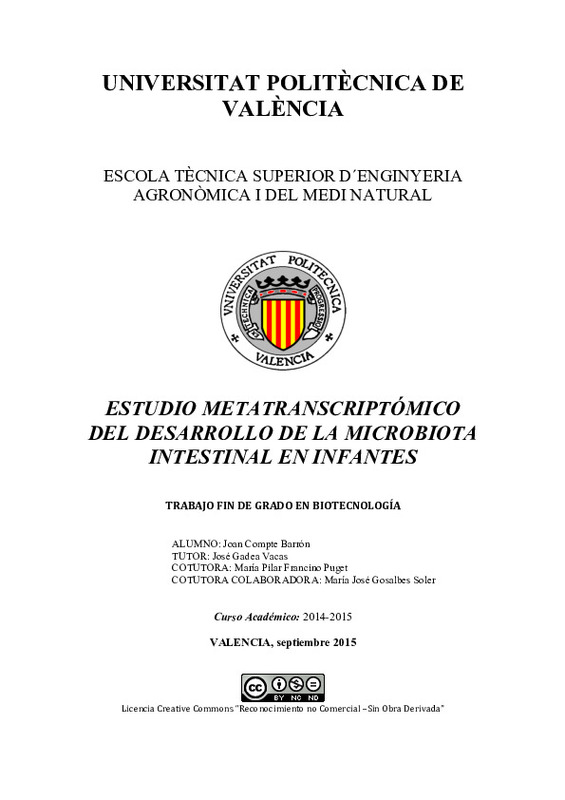JavaScript is disabled for your browser. Some features of this site may not work without it.
Buscar en RiuNet
Listar
Mi cuenta
Estadísticas
Ayuda RiuNet
Admin. UPV
Estudio metatranscriptómico del desarrollo de la microbiota intestinal en infantes
Mostrar el registro completo del ítem
Compte Barrón, J. (2015). Estudio metatranscriptómico del desarrollo de la microbiota intestinal en infantes. http://hdl.handle.net/10251/56069.
Por favor, use este identificador para citar o enlazar este ítem: http://hdl.handle.net/10251/56069
Ficheros en el ítem
Metadatos del ítem
| Título: | Estudio metatranscriptómico del desarrollo de la microbiota intestinal en infantes | |||
| Autor: | Compte Barrón, Joan | |||
| Director(es): | Francino Puget, María Pilar Gosalbes Soler, María José | |||
| Entidad UPV: |
|
|||
| Fecha acto/lectura: |
|
|||
| Resumen: |
[ES] El intestino humano es el hábitat natural de una comunidad bacteriana dinámica y diversa que
tiene una gran importancia para la salud humana. La colonización del tracto gastrointestinal
en infantes es compleja y con ...[+]
[EN] The human gut constitutes the natural habitat of a dynamic and diverse bacterial
community, which acquires a great importance for human health. The
gastrointestinal track colonization in infants ...[+]
|
|||
| Palabras clave: |
|
|||
| Derechos de uso: | Reconocimiento - No comercial - Sin obra derivada (by-nc-nd) | |||
| Editorial: |
|
|||
| Titulación: |
|
|||
| Tipo: |
|
recommendations
Este ítem aparece en la(s) siguiente(s) colección(ones)
-
ETSIAMN - Trabajos académicos [3541]
Escuela Técnica Superior de Ingeniería Agronómica y del Medio Natural








